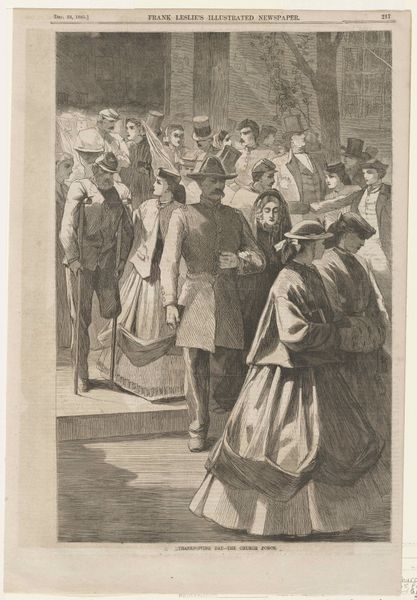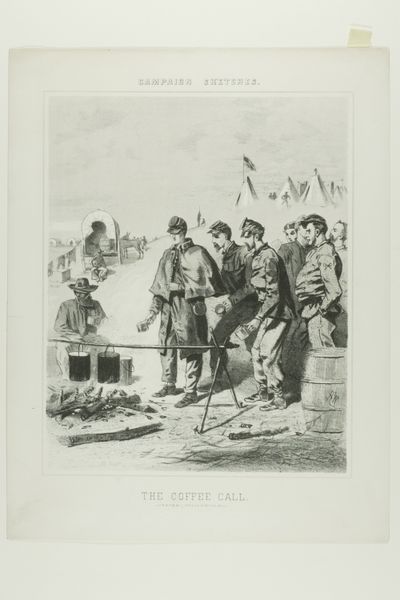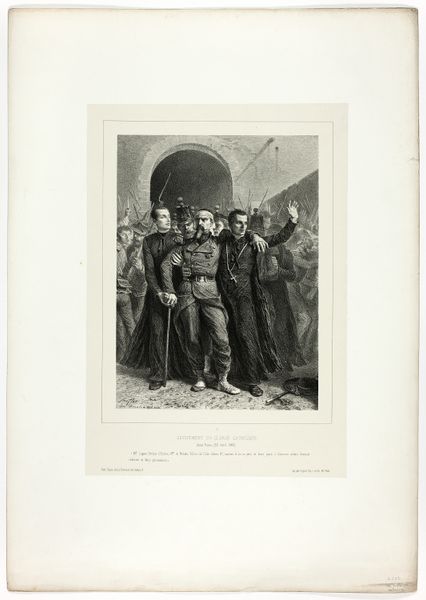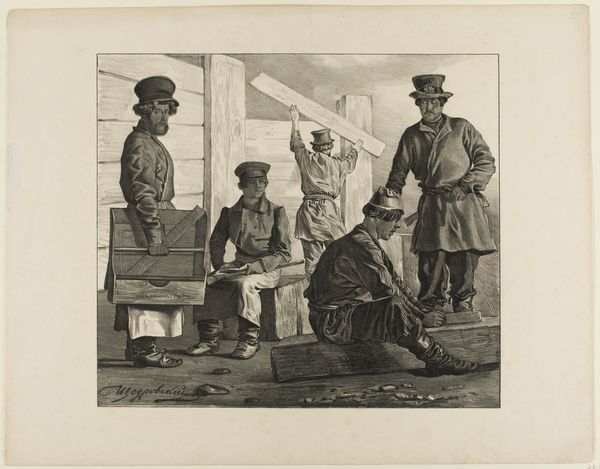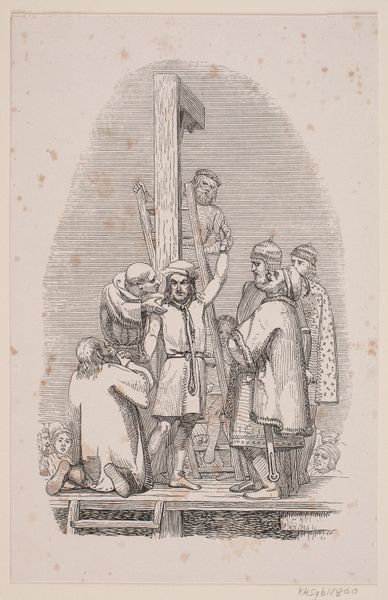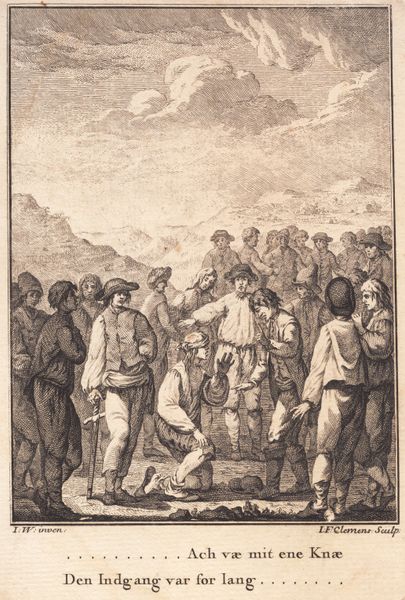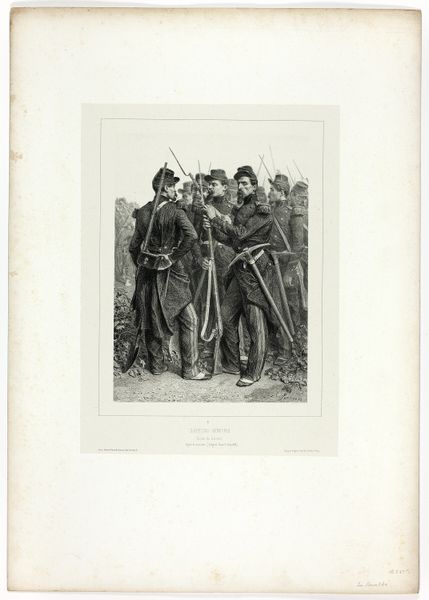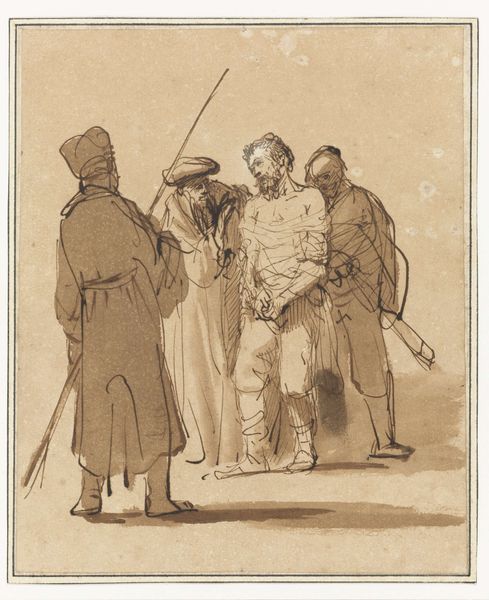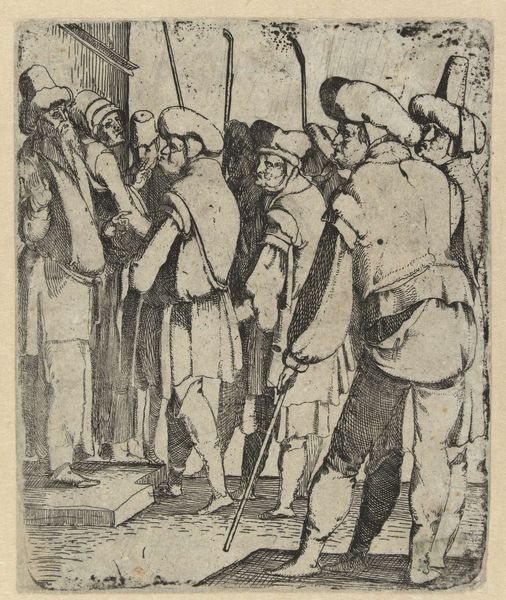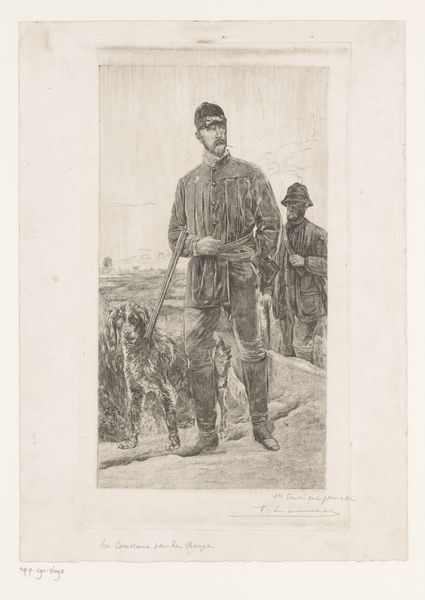
drawing, lithograph, print, paper, graphite
#
portrait
#
drawing
#
lithograph
# print
#
paper
#
romanticism
#
graphite
#
genre-painting
#
history-painting
#
graphite
#
realism
Dimensions: 282 × 208 mm (image); 282 × 210 mm (primary support); 395 × 290 mm (secondary support)
Copyright: Public Domain
Auguste Raffet created this lithograph, Russian Peasants, sometime before 1860, using a printmaking technique that democratized image production in the 19th century. Lithography involves drawing on a flat stone or metal plate with a greasy crayon, then treating the surface so that ink adheres only to the drawn areas. This allows for relatively quick and inexpensive reproduction, making images accessible to a wider audience. Look at the clothing of these peasants. Raffet skillfully captures the textures and forms of their garments, likely made from homespun cloth. The way they are dressed speaks volumes about their social standing and the realities of rural life in Russia at the time. Consider the amount of labor embedded in this single image. From the peasants toiling in the fields to produce the materials for their clothing, to Raffet's own work in creating the drawing and the printers who reproduced it, this print embodies a complex web of human effort. By focusing on the materials, the making, and the social context, we can appreciate how this image blurs the lines between fine art and social commentary.
Comments
No comments
Be the first to comment and join the conversation on the ultimate creative platform.
